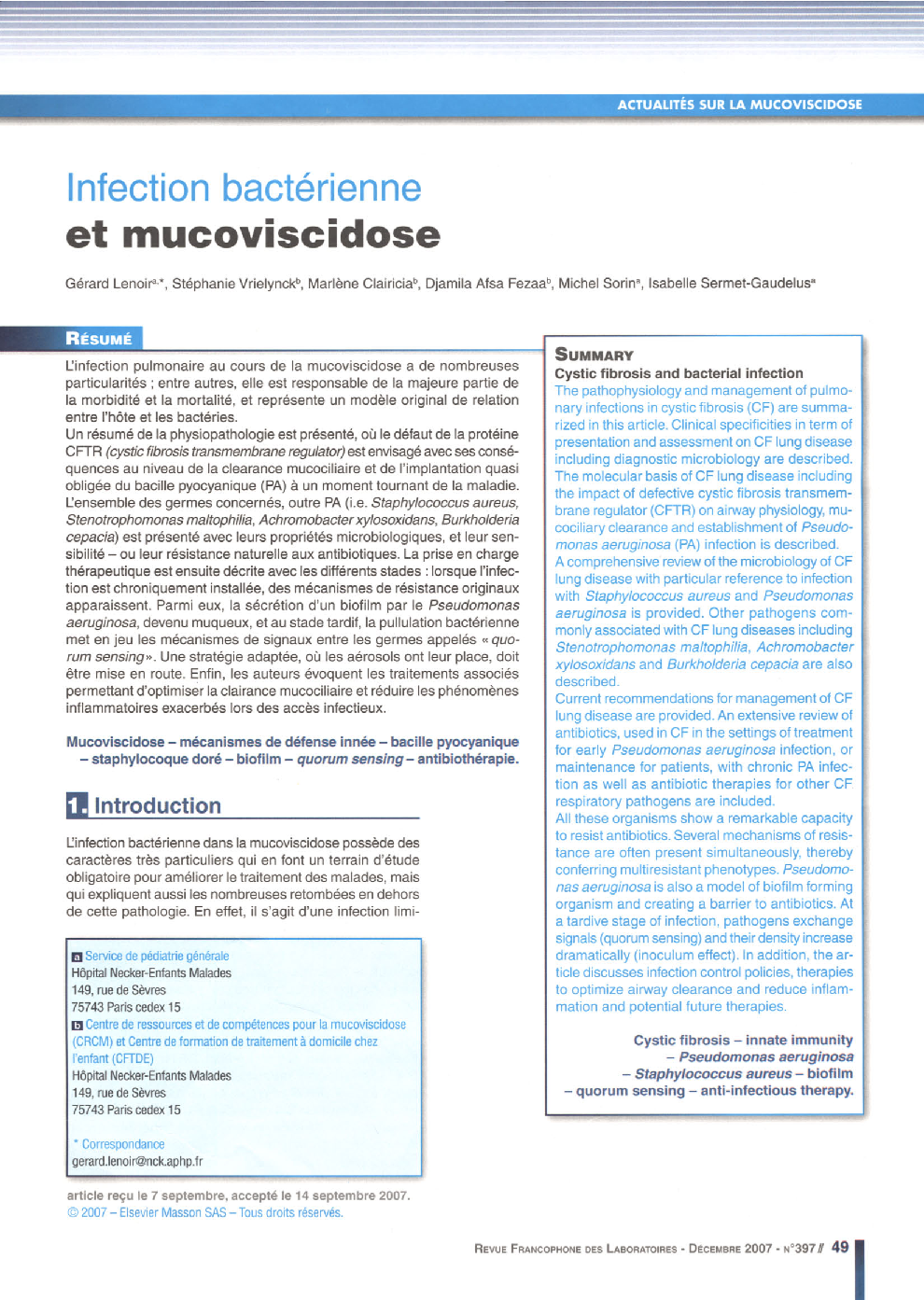| Article ID | Journal | Published Year | Pages | File Type |
|---|---|---|---|---|
| 7664216 | Revue Francophone des Laboratoires | 2007 | 9 Pages |
Abstract
Cystic fibrosis and bacterial infection The pathophysiology and management of pulmonary infections in cystic fibrosis (CF) are summarized in this article. Clinical specificities in term of presentation and assessment on CF lung disease including diagnostic microbiology are described. The molecular basis of CF lung disease including the impact of defective cystic fibrosis transmembrane regulator (CFTR) on airway physiology, mu- cociliary clearance and establishment of Pseudomonas aeruginosa (PA) infection is described. A comprehensive review of the microbiology of CF lung disease with particular reference to infection with Staphylococcus aureus and Pseudomonas aeruginosa is provided. Other pathogens com- monly associated with CF lung diseases including Stenotrophomonas maltophilia, Achromobacter xylosoxidans and Burkholderia cepacia are also described. Current recommendations for management of CF lung disease are provided. An extensive review of antibiotics, used in CF in the settings of treatment for early Pseudomonas aeruginosa infection, or maintenance for patients, with chronic PA infection as well as antibiotic therapies for other CF respiratory pathogens are included. All these organisms show a remarkable capacity to resist antibiotics. Several mechanisms of resistance are often present simultaneously, thereby conferring multiresistant phenotypes. Pseudomonas aeruginosa is also a model of biofilm forming organism and creating a barrier to antibiotics. At a tardive stage of infection, pathogens exchange signals (quorum sensing) and their density increase dramatically (inoculum effect). In addition, the article discusses infection control policies, therapies to optimize airway clearance and reduce inflammation and potential future therapies.
Keywords
Related Topics
Physical Sciences and Engineering
Chemistry
Analytical Chemistry
Authors
Gérard Lenoir, Stéphanie Vrielynck, Marlène Clairicia, Djamila Afsa Fezaa, Michel Sorin, Isabelle Sermet-Gaudelus,
